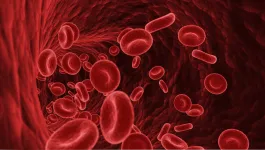How to measure ADAMTS13 activity?
12 min
Various techniques can assess ADAMTS13 activity and identify inhibitory antibodies. Typically, evaluating ADAMTS13 activity is more clinically valuable than tests focusing solely on the quantity of ADAMTS13, known as ADAMTS13 antigen.1
Activity assays
A test to measure ADAMTS13 activity is required to confirm TTP diagnosis2 and therefore measuring ADAMTS13 activity has become increasingly important in the evaluation and treatment of patients with TTP.3
Early ADAMTS13 assays, which used plasma-derived VWF multimers as substrate, involved time-consuming steps of conformational unfolding. Testing principles have undergone significant advancements. Today, most of the commonly utilized assays for measuring ADAMTS13 activity are based on enzyme-linked immunosorbent assay (ELISA) or fluorescence resonance energy transfer (FRET)-based technologies utilizing recombinant VWF1 fragment that encompasses the ADAMTS13 cleavage site [Tyrosine 1605-Methionine 1606 [Tyr1605-Met1606]].4
The ADAMTS13 activity assays involve two key steps5:
The test plasma is incubated with the substrate (full-length VWF multimers or truncated peptides containing the ADAMTS13 cleavage site), leading to substrate proteolysis by ADAMTS13 present in the test plasma.
- The cleavage product is detected and quantified as it is proportional to the level of ADAMTS13 activity in the test plasma.
Methods of detection may be direct (measuring the cleavage product) or indirect (measuring the residual VWF).5
The lower detection limit of current ADAMTS13 activity assays is less than 1% to 5%.5
The fluorescence resonance energy transfer (FRET)-VWF73 assay detects increased fluorescence generated by a truncated synthetic 73 amino acid modified fragment of the A2 domain of VWF (FRETVWF73) substrate when it is cleaved by ADAMTS13 in the plasma.4 The degree of fluorescence is directly proportional to the ADAMTS13 activity.4
One limitation of this assay is that severe hyperbilirubinemia interferes with FRET-based assays. To circumvent this issue, test plasma may be diluted to reduce the bilirubin concentration, but this is at risk of a possible loss of detection sensitivity.5
The chromogenic ADAMTS13 activity enzyme-linked immunosorbent assay (ELISA), is based on the N10 monoclonal antibody directly detecting the cleavage site of a synthetic 73-amino-acid peptide, VWF73.8
Such assay kits include calibrators which are used to create a calibration curve and from which the ADAMTS13 activity in the test samples can be established.4
Note that the use of EDTA-treated plasma in this assay should be avoided since EDTA retrieves divalent cations from the ADAMTS13 metalloprotease domain, rendering ADAMTS13 inactive.9
In this assay purified VWF is incubated with plasma for 24 hours. Cleavage of the VWF by ADAMTS13 present in the plasma takes place, leading to a reduction in VWF multimer sizes. This reduction is visualised by agarose gel electrophoresis followed by Western blotting with a peroxidase-conjugated anti-VWF antibody. The concentration of ADAMTS13 activity in the test sample can be established by reference to a series of diluted normal plasma samples.4
Normal plasma or purified VWF is incubated with the test plasma sample in the presence of BaCl2 and 1.5M urea, which exposes the ADAMTS13 cleavage site. VWF is cleaved by ADAMTS13 present in the test plasma sample, and residual VWF is measured using an ELISA assay by its binding to collagen Type III.4
This is similar to the collagen-binding assay above, except that residual VWF is measured by Ristocetin-induced platelet aggregation using a platelet aggregometer.4
Assays limitations
- Timely testing would assist in rapid identification or exclusion of TTP, with patients thereby better managed, and potentially reduced risk and cost burden by avoiding unnecessary plasma exchange.1 However, current methods are not fully automated and are limited to expert laboratories. This may result in a time delay of 4–6 days, in some areas, prior to ADAMTS13 activity results being available.10 Recent ISTH TTP guidelines indicate that activity results available in less than 72 hours are ideal, while results available between 72 hours and 7 days are acceptable.11
- High endogenous VWF, free hemoglobin, hyperlipidemia, and plasma proteases may also inhibit ADAMTS13 in vitro, causing a falsely low activity level in most assays.5
- Diagnostic samples for ADAMTS13 activity (or antibody testing) should ideally be collected prior to initiating TTP treatment to avoid impacts on the results.11 However, samples obtained up to 3 days after daily plasma exchange still provide diagnostic value for TTP. Indeed, nearly 80% of patients with TTP still demonstrated ADAMTS13 activity of less than 10% when measured after 3 daily plasma exchange procedures.5
- Currently, no international standard, quality control material, or officially recognized units for ADAMTS13 exist.4
- Several studies have compared and identified discrepancies among various types of assays. A second assay using a different method may be needed when the results do not match the clinical picture.5
Anti-ADAMTS13 antibody assays
- To discriminate iTTP from cTTP, the presence of autoantibodies is studied using either an anti-ADAMTS13 IgG detection ELISA or a Bethesda assay.9
- Continued detection of antibodies in clinical remission may indicate a higher risk of TTP relapse and high-antibody titers have been associated with treatment resistance and increased mortality.12
- ADAMTS13 autoantibodies either neutralize proteolytic activity (two-thirds of cases), or solely increase clearance (one-third of cases), and many patients may have both types of antibodies.12
- Neutralizing antibodies are detected and quantified by the ADAMTS13 functional inhibitor assay, which is usually reflexively performed when the ADAMTS13 activity level is below a predefined cutoff level (10%-30%).5
Bethesda assays are used to detect and titer neutralizing autoAbs. Test plasma is heat-treated to inactivate any ADAMTS13 still present, leaving the autoantibodies in the plasma intact. One volume of heat-treated plasma is added to one volume of normal pooled plasma (NPP), the source of ADAMTS13 in the assay. A separate control mixture is prepared, comprising equal volumes of NPP and buffer; in this way, both tubes begin the procedure with identical levels of ADAMTS13. Then, both tubes are incubated for 30 to 120 min, depending on the protocol, to permit the formation of antigen-antibody complexes. The ADAMTS13 activity of the test and control mixtures is then measured in a functional assay, and the residual ADAMTS13 activity of the test sample is calculated as a percentage of that of the control sample subjected to identical incubation conditions. One Bethesda unit (BU) is an inhibitor titer that decreases the residual activity to 50% of the expected value. Performing a dilution series allows for titer determination.2
Rather than interfering with ADAMTS13 proteolytic activity, non-neutralizing antibodies promote ADAMTS13 clearance from plasma. These immunoglobulin G antibodies do not demonstrate functional inhibition on mixing studies, but can be measured by ELISA or Western blot.5
The tests commonly referred to as ADAMTS13 antibody tests are easier and less expensive to perform than a Bethesda assay and utilize ELISA to capture and detect patient antibodies on an ADAMTS13-coated plate. ELISA will identify all antibodies regardless of neutralizing or non-neutralizing properties.12 The ELISA is highly sensitive; antibodies are identified in 97% of patients with iTTP. However, it lacks specificity, as antibodies are also detected in 4% of healthy individuals and 13% of patients with systemic lupus erythematosus.5
Assays limitations
- The Bethesda-like detection of ADAMTS13 inhibitors also shows variability, dependent on the analytical technique.2
- One significant limitation of the ELISA assay is the potential to detect non-ADAMTS13 antibodies that may be present in patients with general autoimmune conditions, particularly if high levels of such antibodies are present.2
- In cases of negative results, the assay must be repeated on samples drawn at different time points because patients at presentation of the acute TTP event sometimes do not present autoantibodies, probably due to immunocomplexes with ADAMTS13 and autoantibodies in circulation.8
- Measuring ADAMTS13 activity in the parents of affected individuals to confirm mild to moderate ADAMTS13 depletion, usually seen in individuals with heterozygous ADAMTS13 mutations, is also useful for cTTP diagnosis.8
Share this article with a colleague
Share this article with a colleague
This website is intended for an international audience of healthcare professionals outside of the US & UK. It should not be shared with patients, carers or the general public.
Abbreviations, Glossary and References
Abbreviations
ADAMTS13; A disintegrin and metalloproteinase with a thrombospondin motifs 13
Cr; Creatinine level
cTTP; Congenital TTP
ELISA; Enzyme-linked immunosorbent assay
FRET; Fluorescence resonance energy transfer
FRETS-VWF73; Fret assay using a 73 amino acid peptide of VWF
IgG; Immunoglobulin G
iTTP; Immune-mediated TTP
PLT; Platelet count
rVWF; Recombinant VWF
SDS; Sodium dodecyl sulfate
SDS-PAGE; SDS-polyacrylamide gel electrophoresis
TMA; Thrombotic microangiopathy
TTP; Thrombotic thrombocytopenic purpura
VWF; Von Willebrand factor
Glossary
ADAMTS13; ADAMTS13 (A Disintegrin And Metalloproteinase with ThromboSpondin motifs 13) is a constitutively active enzyme (plasma metalloprotease) that catalyzes the breakdown of ultra large and high molecular weight von Willebrand factor (VWF) into smaller multimers, reducing their thrombogenic potential, and maintaining hemostasis.13,14
Incidence; The rate of new cases or events over a specified period for the population at risk for a certain event.
Microangiopathic hemolytic anemia (MAHA); Process of red blood cell destruction within the microvasculature accompanied by thrombocytopenia due to platelet activation and consumption. Thrombotic thrombocytopenic purpura (TTP) and hemolytic uremic syndrome (HUS) are primary forms of thrombotic microangiopathies.15
Prevalence; The proportion of a particular population found to be affected by a medical condition at a specific time.
Schistocyte; Circulating fragments of red blood cells commonly seen in blood smears from patients with thrombotic microangiopathies including TTP.16
Thrombocytopenia; Refers to a state of reduced peripheral platelets below normal levels (150x109/L) and can be caused by a wide variety of aetiologies that either decrease platelet production or increase platelet consumption.17
Thrombotic microangiopathy (TMA); TMA includes a diverse set of syndromes that can be hereditary or acquired, which can occur in children and adults with sudden or gradual onset.
TMA syndromes, despite being diverse, have a common set of clinical and pathological features: MAHA, thrombocytopenia, organ injury, vascular damage manifested by arteriolar and capillary thrombosis with characteristic abnormalities in the endothelium and vessel wall.18
Thrombotic thrombocytopenic purpura (TTP); TTP is a type of MAHA presenting with moderate or severe thrombocytopenia. There is associated organ dysfunction, including neurologic, cardiac, gastrointestinal and renal involvement; oliguria or anuric renal failure requiring renal replacement therapy is not typically a feature. TTP is confirmed by a severe deficiency (<10%) of ADAMTS13 activity.19
von Willebrand factor (VWF); VWF plays two key roles in hemostasis: 1) in primary (platelet-mediated) hemostasis, VWF binds to collagen and platelets thus promoting platelet activation and aggregation, and 2) in secondary (coagulation factor mediated) hemostasis VWF binds factor VIII (FVIII) protecting FVIII from rapid clearance. When VWF binds to collagen following vascular injury, it releases FVIII, leading to FVIII activation and initiation of the coagulation cascade.20,21
References
- Favaloro, E.J., et al., Laboratory testing for ADAMTS13: Utility for TTP diagnosis/exclusion and beyond. Am J Hematol, 2021. 96(8): p. 1049-1055.
- Dainese, C., et al., Anti-ADAMTS13 Autoantibodies: From Pathophysiology to Prognostic Impact-A Review for Clinicians. J Clin Med, 2023. 12(17).
- Masias, C. and S.R. Cataland, The role of ADAMTS13 testing in the diagnosis and management of thrombotic microangiopathies and thrombosis. Blood, 2018. 132(9): p. 903-910.
- Practical-Haemostasis.com. ADAMTS13 assays. [Accessed 06/26/2024]; Available from: https://practical-haemostasis.com/Miscellaneous/adamts13_assays.html.
- Chiasakul, T. and A. Cuker, Clinical and laboratory diagnosis of TTP: an integrated approach. Hematology Am Soc Hematol Educ Program, 2018. 2018(1): p. 530-538.
- Sukumar, S., B. Lammle, and S.R. Cataland, Thrombotic Thrombocytopenic Purpura: Pathophysiology, Diagnosis, and Management. J Clin Med, 2021. 10(3): p. 536.
- Coppo, P., et al., Predictive features of severe acquired ADAMTS13 deficiency in idiopathic thrombotic microangiopathies: the French TMA reference center experience. PLoS One, 2010. 5(4): p. e10208.
- Sakai, K. and M. Matsumoto, Clinical Manifestations, Current and Future Therapy, and Long-Term Outcomes in Congenital Thrombotic Thrombocytopenic Purpura. J Clin Med, 2023. 12(10): p. 3365.
- Bonnez, Q., K. Sakai, and K. Vanhoorelbeke, ADAMTS13 and Non-ADAMTS13 Biomarkers in Immune-Mediated Thrombotic Thrombocytopenic Purpura. J Clin Med, 2023. 12(19).
- Roose, E. and B.S. Joly, Current and Future Perspectives on ADAMTS13 and Thrombotic Thrombocytopenic Purpura. Hamostaseologie, 2020. 40(3): p. 322-336.
- Zheng, X.L., et al., ISTH guidelines for the diagnosis of thrombotic thrombocytopenic purpura. J Thromb Haemost, 2020. 18(10): p. 2486-2495.
- Smock, K.J., ADAMTS13 testing update: Focus on laboratory aspects of difficult thrombotic thrombocytopenic purpura diagnoses and effects of new therapies. Int J Lab Hematol, 2021. 43 Suppl 1: p. 103-108.
- Markham-Lee, Z., N.V. Morgan, and J. Emsley, Inherited ADAMTS13 mutations associated with Thrombotic Thrombocytopenic Purpura: a short review and update. Platelets, 2023. 34(1): p. 2138306.
- Kremer Hovinga, J.A., et al., Thrombotic thrombocytopenic purpura. Nat Rev Dis Primers, 2017. 3: p. 17020.
- Arnold, D.M., C.J. Patriquin, and I. Nazy, Thrombotic microangiopathies: a general approach to diagnosis and management. CMAJ, 2017. 189(4): p. E153-E159.
- Zini, G., et al., ICSH recommendations for identification, diagnostic value, and quantitation of schistocytes. Int J Lab Hematol, 2012. 34(2): p. 107-116.
- Gauer, R.L. and M.M. Braun, Thrombocytopenia. Am Fam Physician, 2012. 85(6): p. 612-622.
- George, J.N. and C.M. Nester, Syndromes of thrombotic microangiopathy. N Engl J Med, 2014. 371(7): p. 654-666.
- Scully, M., et al., Consensus on the standardization of terminology in thrombotic thrombocytopenic purpura and related thrombotic microangiopathies. J Thromb Haemost, 2017. 15(2): p. 312-322.
- Rauch, A., et al., On the versatility of von Willebrand factor. Mediterr J Hematol Infect Dis, 2013. 5(1): p. e2013046.
- Stockschlaeder, M., R. Schneppenheim, and U. Budde, Update on von Willebrand factor multimers: focus on high-molecular-weight multimers and their role in hemostasis. Blood Coagul Fibrinolysis, 2014. 25(3): p. 206-216.



